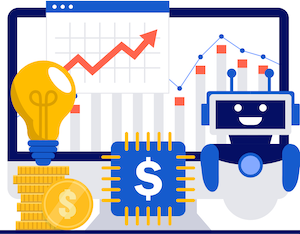- About Us
- Services
- Industries
- Resources
- Careers
- Contact

It’s well-known that retailers who know their customers keep their customers. However, it’s much harder to grow and acquire loyal customers. With the shopper front and center and clearly in control, retailers need to apply what they know about their customers’ needs, wants, and behaviors to stay relevant. It is not enough to only know who your customers are and what they buy — you have to understand what brings them into the store.
Retailers are continually finding innovative ways to gain insights from an increasing amount of structured and unstructured data about their customer’s habits. While customers are armed with better information such as online reviews from friends or peers, retailers have better access to data and technologies to keep up with customer demands.
By applying the tools of big data and real-time analytics, retailers can deliver customized experiences that anticipate and reward customer behavior in a way that creates not only long-term bonds but powerful word-of-mouth advocacy. We will see more personalized offers focused on individual purchase behavior tracked by loyalty programs. Loyalty-leading brands such as Amazon, Netflix, Starbucks, and Zappos set a baseline for customer loyalty built around unique experiences. Any retailer can now do the same with data and analytics.
Data analytics is found at nearly every stage in the retail process, from trending forecasting to inventory management to price optimization and recommendation. According to McKinsey, a retailer using data analytics to the full can increase its operating margin by up to 24 percent. For example, when a retailer uses technology that optimizes the store layout and inventory flow and ensures proper floor coverage to better serve shoppers already in-store, they can increase foot traffic and the conversion rate.
Successful retailers have been using predictive models to forecast demand and set prices for years. Now, retailers have expanded use cases to using AI to dynamically recommend products and set prices that appeal to individual shoppers. Think of it as providing your customer with a personal assistant who can anticipate all her needs and eliminate any friction in her shopping journey.
This level of prediction requires analyzing patterns at scale from massive data sets that are continually changing. These data sets include consumers’ purchase histories, product preferences, competitor’s pricing, and current and anticipated product trends. Many leading retail brands have prioritized heavy investment in this area, making it one to watch.
More and more retailers are using IoT devices and in-store technologies to optimize the customer experience in their stores, making brick and mortar cool again.
More than half (55%) of retailers are investing in technologies as their most crucial store operations priority, according to Retail TouchPoints. RSR found 65% of retail winners versus 38% of all others say there will be more selling activity in stores over the next two years.
Sensors, such as RFID readers, beacons, Wi-Fi access points, and cameras are combined to understand a shopper’s movement throughout the store, distinguish associates from shoppers, and pinpoint every item's location in the store. Combining these technologies into a holistic solution allows retailers to optimize their store layout, understand where to place products for a better sightline, and move through inventory more efficiently.
These solutions will be enhanced as retailers begin to connect their loyalty programs, CRM systems, and technologies like interactive signage and displays to the mix, allowing retailers to provide personalized offers based on shopper behavior.
The technology that drives retailing is in the midst of unprecedented advance, and with this advance comes unprecedented adoption. Powerful, integrated applications and the proliferation of networked mobile and hard-wired devices—from warehouses to the store floor—have contributed to an extremely complex retail IT environment full of increasingly mission-critical devices and applications.
As a result, the traditional, reactive support model for critical components in a retailer’s IT infrastructure is also poised for change.
Retailers have always had plenty of data about their customers, but the point solutions of the past did not allow them to work data to their advantage. Different data islands did not offer a holistic picture of the customer and could not deliver real-time insights.
As customer demands increase, retailers need to adopt evolving technologies to help customers find what they are looking for and complete the transaction in-store or online. The experience should be seamless and authentic. This is the way you’ll close the sale and keep the customer.
 As Solugenix VP of Customer Experience and Support Services, Chris Antonelli manages the delivery of customer support services and customer experience initiatives for clients in the retail and financial services industries. Chris leverages two decades of experience in leadership roles where she has guided best-in-class customer support service solutions to global brands like McDonald’s, BMW, Citibank, Sonic Drive-In, and Jiffy Lube. As an Executive Council member for Ellevate Network, Chris is dedicated to the professional development of women in the workforce and ardent supporter of remote workforce development.
As Solugenix VP of Customer Experience and Support Services, Chris Antonelli manages the delivery of customer support services and customer experience initiatives for clients in the retail and financial services industries. Chris leverages two decades of experience in leadership roles where she has guided best-in-class customer support service solutions to global brands like McDonald’s, BMW, Citibank, Sonic Drive-In, and Jiffy Lube. As an Executive Council member for Ellevate Network, Chris is dedicated to the professional development of women in the workforce and ardent supporter of remote workforce development.
Get the latest insights for leaders in retail tech & customer experience.

These Stories on Customer Experience
Solugenix
Technology & Process for Growth
601 Valencia Ave, Suite 260
Brea, CA 92823
Call us: 1-866-749-7658